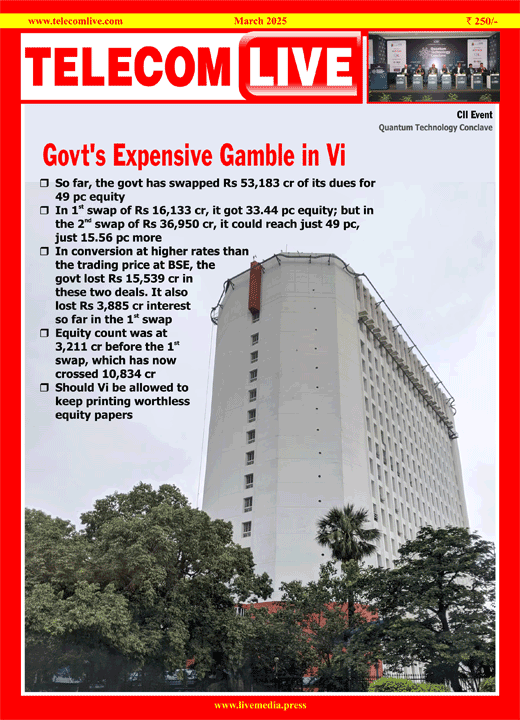Leading broadcasters raise TV channel rates after three years
The monthly TV subscription bills for consumers are likely to increase as leading TV broadcasters have increased the a la carte and bouquet rates of channels. The new pricing will come into effect on February 1 next year. Zee Entertainment Enterprises (ZEE), Culver Max Entertainment (Sony) and Sun TV Network have filed their reference interconnect offers (RIO). These are documents published by a service provider, specifying terms and conditions on which another service provider may seek interconnection with its network.
Disney Star India and Viacom18 are expected to file their RIOs soon. TV distribution service providers fear that the price increase by the broadcasters will impact the pay-TV industry, which is facing tough competition from the DD Free Dish – Prasar Bharati’s free direct-to-home (DTH) platform – and over-the-top (OTT) platforms.
“We had requested Trai (Telecom Regulatory Authority of India, which also regulates this sector) that they (tariffs) should not go back to the ₹19 MRP cap, but the regulator didn’t listen to us. Trai kept telling DPOs (distribution platform operators) that broadcasters will not increase the prices,” said a senior executive at a cable TV company. “Now, Sony and Zee have hiked the MRP of many channels. The price of certain bouquets has been increased by 10-15%. In some cases, the increase is even higher.” The executive said Sony had discontinued its base bouquet priced at ₹31 and replaced it with a new bouquet which costs ₹43. ZEE has increased the MRP of its Hindi movie and regional channels, he said.
The price hike comes in the wake of the amendments notified by Trai to the regulatory framework for broadcasting services on November 22. Trai had reinstated the old MRP cap of ₹19 (from ₹12) and done away with ‘twin conditions’ in the amended framework. It said a broadcaster could offer a maximum discount of 45% on pay channel bouquets over sum of MRPs of the pay channels in that bouquet.
The regulator had introduced the twin conditions in order to link a la carte and bouquet pricing. The first condition stated that the sum of the a la carte rates of the pay channels (MRP) forming part of a bouquet shall in no case exceed one and a half times the rate of the bouquet of which such pay channels are a part. The second said the a la carte rates of each pay channel cannot be more than three times the average rate of a pay channel in the bouquet.
TV broadcasters have argued that they had not been able to increase their prices for the last three years due to regulatory uncertainty even as the content costs were rising.
Elara Capital senior vice president Karan Taurani said the subscription revenue of TV broadcasters would start looking up from the next calendar year. “The subscription revenue of broadcasters from the linear side has been under pressure. That should start looking up due to the price increase. In certain quarters, the subscription revenue had also seen a de-growth,” he stated.
According to Crisil, the active paid TV subscription will fall by 5 million over fiscal 2022-24 since the DTH and cable companies have been losing customers in the three years due to cord-cutting and movement to DD Free Dish.
It added that the average revenue per user (ARPU) for the TV industry had seen a decline since the new subscriber additions were happening in rural areas.
The ratings firm noted that clarity over the implementation of the amended tariff order was expected to lift the ARPU. The new NTO 2.0 guidelines issued by the regulator recently will help TV distribution platforms to improve revenue and operating profits, it said.
Crisil also pointed out that the change to bouquet pricing and the general elections in 2024 would drive up subscription and ad revenues, respectively.



